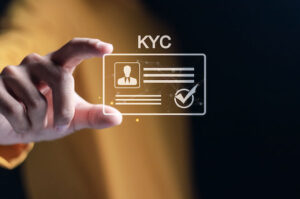Commercial and Industrial loans, also known as C&I loans, are a dependable revenue stream for banks. They are made for a business or corporation and can be used for several different purposes.
We’ll explore what a C&I loan is, how they work, and what differentiates them from other types of loans.
What is a commercial and industrial (C&I) loan?
C&I loans are loans that are made to a business, nonprofit organization, or corporation. They are unique in that they are only given to organizations and not individual borrowers. They can be used as a method of purchasing new office equipment, industrial equipment, funding capital expenditures, and more.
How do C&I loans differ from other types of loans?
C&I loans cater to businesses and not individuals, and they offer funding for various legitimate business financing needs, such as capital expenditures and working capital. Non-real-estate collateral typically supports these loans and generally provides short-term financing.
Commercial and industrial loans, or C&I loans, are differentiated from other loans in a few ways:
C&I loans are for businesses, not people. They are used to pay for things like capital expenses, inventory purchases, and working capital.
C&I loans are usually backed by non-real-estate assets, like equipment or accounts receivable. The borrower’s business assets are collateral for the loan, not things like a home or car.
C&I loans are short-term, with repayment periods from a few months to a few years. This contrasts with other types of loans, such as mortgages or car loans, which may have longer repayment terms of 10 to 30 years.
Overall, C&I-loans are designed to meet the specific financing needs of businesses, with collateral and repayment terms tailored to the unique circumstances of the borrower. As such, they differ significantly from other types of loans designed for individuals, and have different collateral and repayment requirements.
How do commercial and industrial loans work
One of the essential features of C&I loans is that they require collateral to secure the loan. Collateral refers to an asset pledged as security for the loan repayment. The type of collateral required can vary depending on the lender’s policies and the borrower’s creditworthiness. Common forms of collateral used to secure C&I loans include equipment, accounts receivable, inventory, and real estate.
When structured as a lump sum, a C&I loan provides businesses with a fixed amount of money upfront, which can be used to fund capital expenditures, expand operations, or meet other short-term financing needs. The repayment terms for a lump sum C&I loan can range from six months to several years, with interest rates typically fixed or variable.
A revolving line of credit, on the other hand, is a flexible form of financing that provides businesses with access to a pre-approved credit limit. Businesses can draw on the credit line as needed and only pay interest on the amount borrowed. This type of financing is ideal for businesses with fluctuating cash flows or unpredictable expenses.
For those looking for funding to begin a new venture or expand a small business, C&I loans present a viable option. While obtaining these loans may be simple, providing collateral is often required.
To obtain a commercial loan, one must present a loan proposal that adheres to the bank’s criteria. This proposal may include a business and management experience profile, loan request, loan repayment plan, collateral, personal and business financial statements, income and cash flow projections, and information regarding how much the owner plans to invest in the business to secure the loan.
A Small Business Administration (SBA) loan is a form of commercial loan that follows the SBA’s guidelines and obtains an SBA guarantee, which shifts the borrower’s risk from the lender to the SBA.
The sort of loan a person applies for will depend on their business requirements and the amount of money they want to borrow. Working capital and seasonal loans are common in manufacturing, distribution, retail, and service businesses and may either be short-term loans or a line of credit. On the other hand, term business loans can be used to obtain capital assets, debt consolidation, and refinancing, and typically require regular payments and contain restrictive covenants.
Pros and Cons of C&I loans
Businesses can avoid the lengthy and challenging process of finding equity investors by opting for C&I loans. Unlike equity investments, which can be costly, time-consuming, and require accountability to investors, C&I loans offer a faster way of raising funds for expansion, as long as sufficient collateral exists.
But, it’s essential to keep in mind that C&I loans have to be repaid within a year or two, and the interest or debt service associated with it may be substantial. Repaying the loan takes away from the company’s working capital, reducing the amount of cash available for daily operations.
Hopefully, this has been helpful in shedding some light on Commercial and Industrial loans. Anyone wanting to learn more about the process of lending for a C&I loan should contact BankersHub. They offer in-depth certification and training courses that can further educate banking professionals on the nuances of lending.








